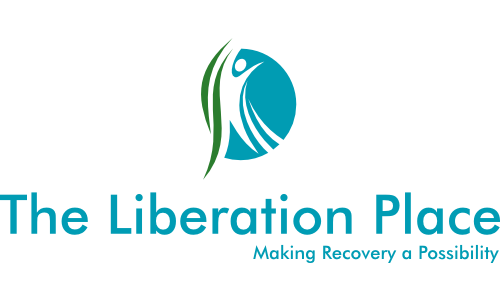Distress Tolerance
Before we can get into working with the parts of our personality that are reacting to our childhood schemas in old familiar ways, we have to be able to recognize, and then handle the emotional distress that comes into our system throughout these difficult times. Overwhelming emotional experiences are the primary reason we fall into our ineffective behaviour patterns, so learning how to tolerate emotional distress is where we need to start things off. Psychological and emotional distress is a general term that's often used to describe the unpleasant feelings or emotions that we tend to experience on a regular basis. This is particularly true if you identify, as I do, as a Highly Sensitive Person (HSP). If this this applies to you, and you grew up in what you felt was an emotionally invalidating environment, then the research has shown that what we experince as overwhelming emotional distress impacts our ability to function at a level that is satisfactory to our needs in these emotionally challenging times.
Psychological and emotional distress are key components in the activation of the negative core beliefs that are attached to the stories we have about the environment we are in, the people around us, and our own general sense of self. This is also tied to the activation of the childhood schema that we ultimately need to work on if we want to change the ineffective behaviour patterns that are impacting our lives in a negative way. No two people experience one event in the exact same way, so psychological and emotional distress is therefore a very unique experience for everyone. One way to think of psychological and emotional distress is as a continuum with 'mental health' and 'mental illness' at opposing ends. I use those terms very loosely, because I'm very aware of the judgement that can be associated with each one of them. However, it can sometimes be helpful for our understanding of what we are going through that, as we continue to have different experiences in our lives, we travel back and forth on this continuum, rarely finding ourselves stuck in one place for an extended period of time.
"No two people experience one event in the exact same way, so psychological and emotional distress is a unique experience."
~Steven Morris RP.
It is also important to recognize that each of us has an emotional window of tolerance for our experience of psychological and emotional distress. For many of us, there is an upper and a lower threshold to this window. On the upper level, the emotion becomes overwhelming for our system, the prefrontal cortex shuts down, we go into a space of fight or flight, and our ability to function is significantly impaired. On the lower level, things become too quiet, too peaceful, or too calm. This can also trigger a sense of fear, like things are going too well, which is an indication that there is a catastrophe coming right around the next corner. As a result, our anxiety raises, confirmation bias filters are activated in our system, and a “Self-Fulfilling Prophecy” will often play out causing things to end in the exact same manner as we're expecting them to.
Distress Tolerance skills do not remove the emotional experience itself though; this is something we need to be extremely clear on right from the start. As Humans, we are emotional beings, and removing the emotional experience is just not something that's possible for us to do. I personally tried to achieve this impossible task using substances for the better part of 20 years, and I think we all know how well that worked in the grand scheme of things. Distress Tolerance skills help us to handle the emotional experience in a way that means we basically don’t "freak out" or go into those ineffective behaviour patterns that are automatically triggered by the distress we're exposed to. They help to bring us back into our window of emotional tolerance which gives us the opportunity to use some of our other skills available in DBT. This obviously makes our window of tolerance an incredibly important place for us to be, and the general size of this emotional window of tolerance varies from person to person. This unique threshold is more commonly known in the professional world as our level of Distress Tolerance, and it is dependent on several factors.
These include, but are not limited to the following things:
Accumulation of stressors
Letting things build up, and being constantly immersed in chaos everywhere in life decreases our ability to manage emotions. Our inability to recognize the build up of emotional distress usually leads to ineffective responses that leave us sitting in unwanted emotions like guilt, shame, sadness, loneliness. Sometimes the dominant experience will be anger as a way to cope with and try to control what’s happening in our system.
Lack of sleep
Poor sleep hygiene creates a diminished ability to tolerate emotional distress. The longer this goes on the worse it can become. Failure to follow healthy sleep guidelines causes significant physical issues that are directly linked to our mental and emotional wellbeing. In other words, the more we don’t sleep well, the more irritable we are, so the more emotionally sensitive our reactions will become.
No Recharge opportunity
When we don’t meet our needs for self-care by learning how to switch off and recharge our batteries in a healthy way, our window of emotional tolerance decreases dramatically. This includes when we do things like constantly working without making time to relax, continually keeping busy because we are afraid of what will happen if we sit still for any length of time, or generally not paying attention to what our body is letting us know we need to do.
Unresolved Trauma
The associated symptoms of Post Traumatic Stress Disorder (PTSD), Complex Post Traumatic Stress Disorder (CPTSD), Developmental Trauma, and our unmet childhood needs decreases the size of our window of tolerance. This leaves us continuously closer to our emotional threshold regardless of what’s happening around us, often due to a sense of hypervigilance, or a feeling that something bad is going to happen at any point in time. This increases emotional sensitivity and leads to ineffective coping mechanisms in emotionally distressing situations.
Unwell (Hungover)
Tolerance for emotional distress is decreased when we are faced with anything that undermines our physical integrity. This includes things like any viral or bacterial infections we may be fighting, injury from accidents, our general well-being, Inflammation of joints (which can also be triggered by excessive sugar in our diet), and the impact of excessive substance use, which obviously causes our physical wellbeing to be compromised in many different ways.
.
Bad Day
As human beings, when life is filled with a lack of purpose and feelings of meaninglessness, and we don't take on meaningful activities because we’re basically not Living the Life we Want to Live, our emotional window of tolerance can significantly decrease. It has been well proven that having meaningful things in our lives can help us to endure emotional pain. When we are “having a bad day” we have little to no acceptance of situations or circumstances we are in. This can be down to our system being dominated by parts that are "stubborn" keeping us stuck in the rigidity of negative beliefs about how we have to be mad, upset, or even punished right now. This regularly leads to a decrease in our levels of emotional tolerance.
Detesting discomfort
The discomfort of emotional pain is a natural part of life. Accepting this is essential in building our ability to handle emotional distress. In fact, in Dialectical Behaviour Therapy we have an equation that reads, Emotional Pain – Acceptance = Emotional Suffering. Constantly avoiding our emotional discomfort, wrapping ourselves in cotton wool, in a futile attempt to constantly stay in our comfort zone, leads to lowered ability to cope with any level of distress whenever it comes up.
Dialectical Behaviour Therapy emphasizes the benefits of developing our ability to tolerate and accept distress as an essential mental health goal in every journey of behaviour change. Pain and distress are part of life, and we have to be able to recognize, and ultimately learn to accept, that they cannot be entirely avoided or removed. Fundamentally, Distress Tolerance skills give us the ability to perceive our environment without putting demands on it to be different. When used effectively, Distress Tolerance Skills allow us to experience our current emotional state, and all of the parts that are activated in our system, without attempting to change anything.
It's also true that Distress Tolerance is not a rigid set of rules that means we have to sit with our emotions all the time. There is absolutely nothing wrong with the skills of Distract and Avoid. For me this was my dominant coping mechanism at the start of my journey, and it is something we use a lot in the Distress Tolerance module. When these skills are in full flow, we know when it’s the right time to choose to distract and avoid, or to sit with the emotional experience. We can observe our own thoughts, feelings, and behaviour patterns without attempting to stop or control them in any way. Take a look through the following pages of this website to build an understanding for what it takes to utilize the DBT Distress Tolerance Skills.
Follow us on Social Media





